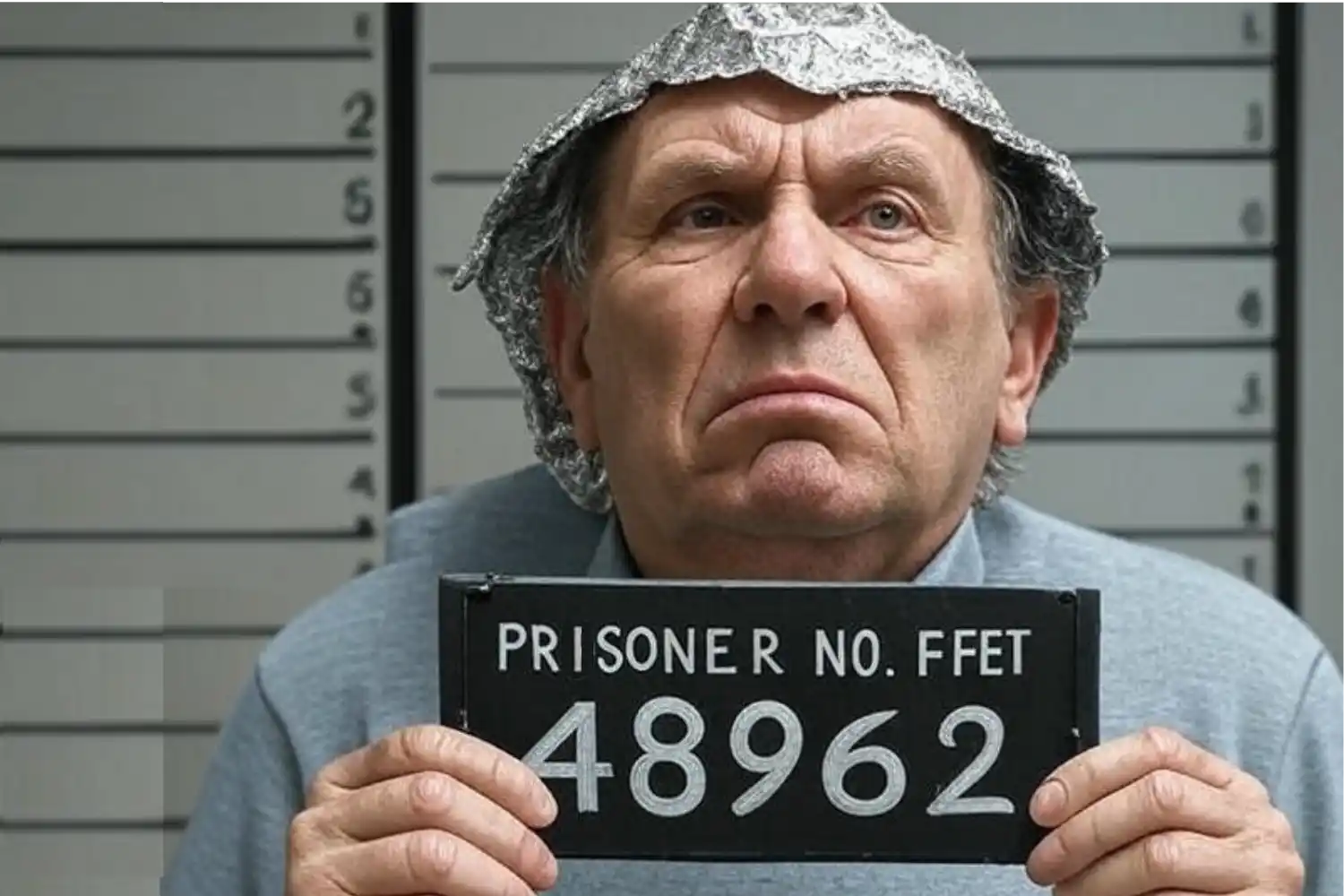Fake News. Who are the agents of chaos?
Fake news: Perpetrators, modus operandi, and motives
You don’t need to be Sherlock Holmes to spot fake news. Like a poorly written detective novel, you know who the culprit is from the very first lines. However, the victim is always the same: our human societies.

The climate-skeptic
“That’s what they call climate change : -3 °C in Paris this morning.”
The profile: That reactionary who can’t stand their favorite restaurant offering a vegetarian menu, or their neighbor buying an electric car with a government tax exemption. Fake irony and a (deliberate or not) misinterpretation of weather data: the offense has all the hallmarks of climate skepticism—or, more broadly, of those who challenge science or medicine.
The modus operandi: His favorite tactic is “cherry picking.” He chooses what suits him by selecting an excerpt from an article, a quote, or a specific piece of data that seems to support a dubious theory, without taking into account the rest of the document or the scientific consensus. An example? Claiming that the planet is cooling based on a local temperature anomaly, deliberately ignoring global trends. He often combines this method with his favorite alibi: a so-called expert, sometimes a Nobel Prize winner in a field unrelated to the subject, or an authentic scientific study taken out of context.
The motive: The power of influence. These figures of doubt gain an audience by simplifying a complex discourse, often going against popular sentiment. A community is born, loyal to these ideas, which establishes their power of influence. This power can then be used for political purposes or to manipulate the masses.

The conspiracy theorist
“Do your own research.”
The profile: This is the advanced level of the climate change denier. A social media expert, they spread false information through dubious content, photoshopped images, or unverifiable sources. However, it’s important to distinguish between the creators of fake news and those who believe in and share it. The latter often end up isolated, cut off from loved ones, and even excluded from society. The descent can be fast: one video on a platform, an algorithm suggesting similar content, and the user sinks into a parallel reality where everything seems to make sense… except the truth.
The modus operandi: They use simplistic, seemingly logical narratives to explain complex phenomena. These stories rely on classic conspiracy tropes: the invisible enemy, the hidden plan, the “evidence” ignored by the media. They exploit distrust of authorities, strong emotions, and rhetorical tricks to hide the lack of concrete evidence. It’s comforting, gives the illusion of knowledge, and flatters a sense of superiority over others: “I know what others don’t.”
The motive: Influence, ideology, profit. Whether it’s pseudoscience, miracle cures, or worthless training programs, the damage goes far beyond your wallet. Public health can even suffer. For example? Measles made a comeback in 2024 among a dozen children in Aveyron, whose parents had been convinced by anti-vax rhetoric.

The social media spammer
“If it’s true, it’s very, very serious.”
The profile: This person is basically a media outlet all on their own. And we all know one — that uncle who’s super active on Facebook or that cousin who floods the family WhatsApp chats. Stockholm syndrome or digital schizophrenia, the serial poster doesn’t have time to bother with fact-checking and ends up being the victim of a system they themselves help to fuel.
Modus operandi: He posts and reposts endlessly on social media, outraged by everything and nothing. Most of the time, he hasn’t even read past the headline of the article he’s sharing. The range of topics is wider than you can imagine: in the morning, you’ll learn how a secret society is threatening North Macedonia, and by evening, you’ll be watching the cutest sneezing cat (and yes, that cat is really cute — but that’s not the point).
Motive: He’s the stray bullet, the unlucky accident, the own goal. With the noble aim of “waking people up,” he ends up exposing them to manipulative content.

the political activist
“They’re hiding the truth from us”
The profile: This one doesn’t do things halfway — the elites lie, the media manipulates, and only *he* knows THE truth. Sporting a yellow vest, a patriot armband, or a union badge, the political activist jumps on any news story. No matter if the facts are twisted or made up, the message remains clear: the people have been betrayed.
Modus operandi: It starts with a blurry video or an image taken out of context to spark a rumor. Then come the viral Facebook posts and live videos where outrage replaces actual arguments. Anything that can sow doubt or fuel anger is fair game. Raw emotion and personal opinion take center stage — not facts, and certainly not fact-checking.
Motive: To rally, to unite, to be seen. These figures aim to gather people around their cause, even if it means lying or manipulating. The story has to hit hard to stir up the masses — even if that means bending (or completely breaking) the truth.

The clickbait medias
“Top 10 Exceptionally Incredible Stories. Number Eight Will Surprise You.”
Profile: A gala of promises of the unusual, a match of revelations… and yet, the real crime lies in the murder of your critical thinking. These are the clickbait media. Bet you’ve already been caught at least once?
Modus operandi: Sensational headlines, numbers without context, chopped-up sentences, dubious anecdotes. The goal? To generate engagement. Emotion—anger, fear, laughter—is their main weapon. And every click, every view, pays off. It’s no longer informative value that drives them, but algorithmic performance. Truth becomes secondary; the audience becomes an end in itself.
Motive: Money. That’s it. Truth doesn’t matter—if it gets clicks, it’s worth it. Some fake news stories are even created solely to boost traffic. When the attention economy rules, manipulation becomes profitable.

Trolls
“You can’t say anything anymore anyway.”
Profile: Sometimes a joking teenager, sometimes a coordinated strategist—alone or in packs—trolls are agents of chaos, anonymous figures with a thousand faces. You can spot them by the comment that goes off the rails, the discussion that turns sour, the debate that descends into ridicule. They may seem to be joking, but the damage is done.
Modus operandi: Provocation, diversion, mass attack. They drop a rumor, a mocking gif, and let others tear each other apart. Serious debates become unreadable and participants are ridiculed. The troll isn’t looking to convince, but to destabilize. They pollute the public sphere by making any constructive exchange impossible. When people walk away, the mission is accomplished.
Motive: Attention, ideology, sabotage. The amateur troll wants to provoke a reaction, the activist troll wants to cause harm, and the professional troll wants to divide. And in a world where everything is questioned, they thrive.
